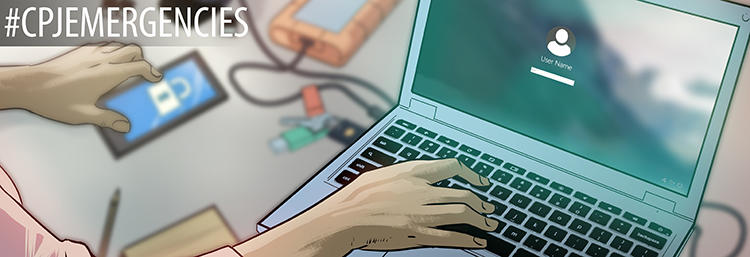Updated March 20, 2023
Strong digital security is crucial for journalists, but dedicated training may be expensive or inaccessible. Luckily, there is a wealth of information online. Use CPJ’s risk assessment template to help you understand the risks attached to particular stories or assignments.
The following resources provide step-by-step guidance on how to protect yourself and will help you secure your accounts and mitigate online harassment and possible threats.
Security advice changes frequently, so check the date of any guide you consult to make sure it is recent or regularly updated.
IWMF, ICFJ, and the Coalition Against Online Violence Online Violence Response Hub
- This site contains the latest guides and resources for better protecting against online abuse.
- Includes scenario-based advice for individual journalists, newsrooms, and those looking to support others targeted by online attackers.
- Details where to get emergency assistance, training, and support.
IWMF and Totem: Know Your Trolls
- Developed by the International Women’s Media Foundation (IWMF) along with digital security experts and journalists, this course is aimed at journalists seeking to identify the source of abuse they are receiving online.
- Learn about some of the tactics that might be used against you, and key strategies for dealing with online abuse.
The New York Times: How to Dox Yourself on the Internet
- An open-source guide to mitigate doxxing, the release of personal information you’d rather keep private. It includes how to dox yourself online, tactics to think like a doxxer, and social media and privacy checklists.
Electronic Frontier Foundation (EFF): How to Talk to Your Family About Digital Security
- Learn how to speak to family and friends about their digital security, including passwords, protecting their online accounts, and social media privacy settings.
- This nonprofit organization aimed at ending harassment offers training workshops on what to do if you face online abuse, and bystander intervention training.
PEN America: Online Harassment Field Manual
- This far-reaching resource includes advice for writers and journalists; witnesses and allies; and employers.
- Learn about how to prepare for online harassment; how you can respond; and legal considerations in the event that you want to involve authorities.
- Learn how and what to document, including emails, social media messages, and phone calls.
Citizen Lab and Consumer Reports: Security Planner
- This planner helps you create a personalized action plan and suggests a top priority action that you can do quickly, such as enabling two-step authentication (2FA).
- Learn how to protect yourself on myriad digital channels and devices, including online shopping and banking; email; and tablets.
TrollBusters: What to Do? Infographic
- This helpful step-by-step infographic shows how to deal with a range of online threats, including being impersonated or doxxed, dealing with an attack on your website or what to do if threats escalate.
Johanna Vehkoo via the Dart Center for Journalism and Trauma: Dealing with Hate Campaigns: Toolkit for Journalists
- Created by a Finnish journalist, this guide (also available en español) details what you should do if you’re the target of a hate campaign.
- The kit contains advice for bosses and colleagues on how to help journalists who are being targeted.
Global Cyber Alliance: The GCA Cybersecurity Toolkit for Journalists
- This toolkit is designed for independent journalists, small newsrooms, and watchdogs to protect themselves and their sources online. The toolkit includes best practices around identifying your devices and apps; preventing phishing and malware; and using secure communications.
For more CPJ advice on digital safety, see:
- Removing personal data from the internet
- Protecting against targeted online attacks
- How to protect against online harassment
- Online harassment and how to protect your mental health
- How to use security keys to secure your account
- Pre-assignment digital security risk assessments
- Safety advisory: Journalist targets of Pegasus spyware
CPJ’s Digital Safety Kit is available in English, French, Russian, Portuguese, Arabic, Ukrainian, and Spanish.
Editors’ note: This advisory was originally published in September 2019. Resources are added and removed periodically to keep it up to date. The publication date at the top reflects the most recent revision.
